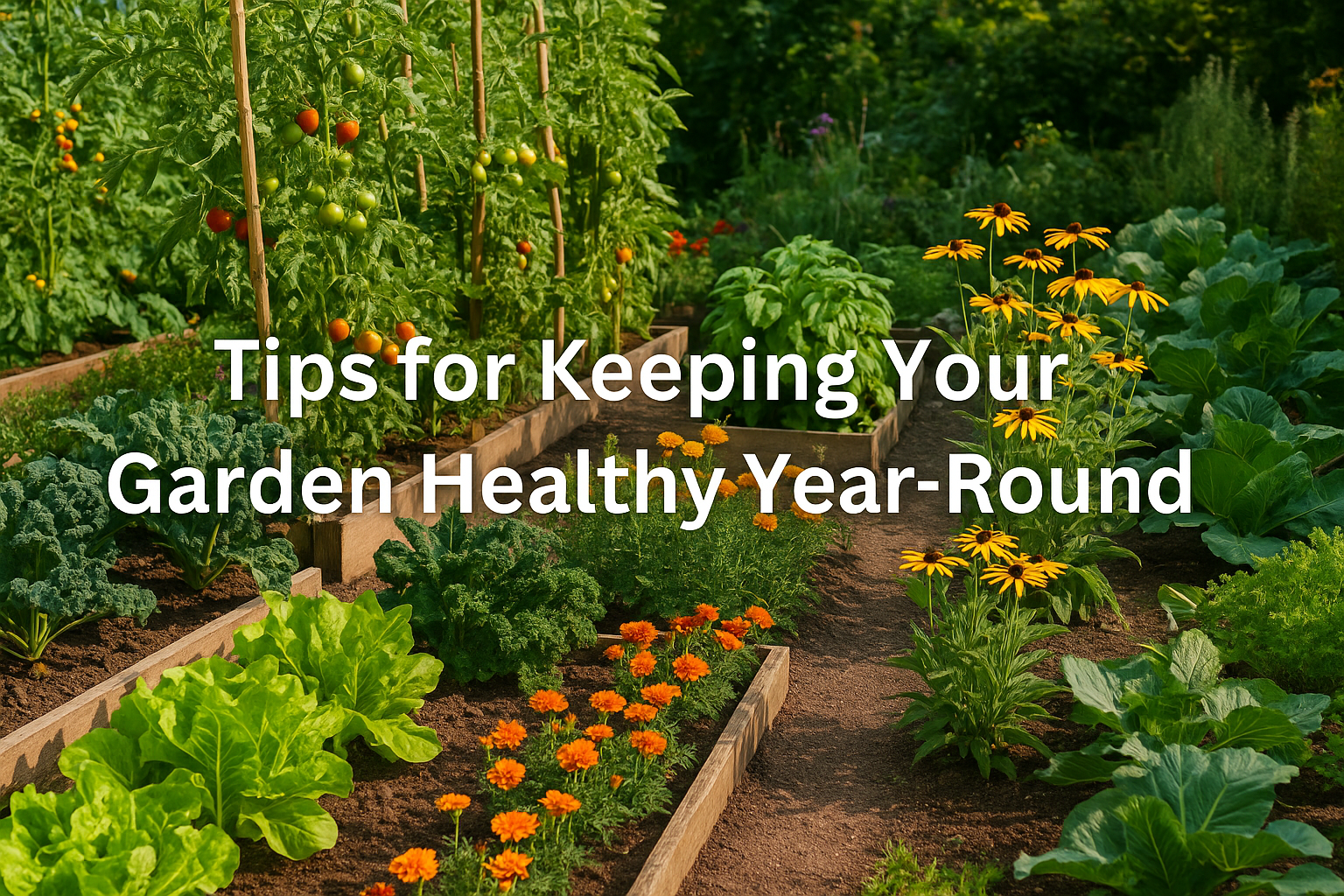A thriving garden is not the result of occasional attention—it’s the outcome of consistent, informed care throughout the seasons. From scorching summers to frosty winters, each season brings unique challenges and opportunities. In this guide, you’ll learn year-round tips to keep your garden vibrant and healthy no matter the weather.
The Importance of Seasonal Gardening
Understanding your garden’s rhythm is crucial. Plants respond to changes in temperature, sunlight, and humidity. By adjusting your care routine with the seasons, you:
- Prevent stress and disease in plants
- Maximize blooming and harvest cycles
- Improve soil health and sustainability
- Reduce the need for chemical interventions
Now, let’s explore what your garden needs, season by season.
Spring: Preparation and Planting
Spring is the season of renewal. It’s the best time to lay the groundwork for a successful growing year.
Tasks for Spring:
- Clean up garden beds: Remove dead plants, leaves, and weeds.
- Prepare the soil: Add compost or organic fertilizer to enrich nutrients.
- Start planting: Begin with hardy vegetables and flowers like lettuce, carrots, and marigolds.
- Prune dormant shrubs and trees: This encourages new growth.
- Set up pest control: Start preventative measures like companion planting or insect netting.
Extra Tip:
Test your soil’s pH and nutrient content to determine what amendments are needed.
Summer: Maintenance and Monitoring
Summer’s warmth boosts plant growth—but also brings stress from heat and pests.
Tasks for Summer:
- Water deeply but less often: Water early in the morning to reduce evaporation.
- Mulch generously: Helps retain moisture and suppress weeds.
- Stake tall plants: Keep tomatoes, beans, and other climbers supported.
- Deadhead flowers: Remove faded blooms to encourage more flowering.
- Monitor for pests: Inspect regularly and remove infestations early.
Extra Tip:
Provide shade cloth or move pots into partial shade during extreme heatwaves.
Fall: Harvest and Transition
As the weather cools, fall is the time to enjoy your harvest and prepare for dormancy.
Tasks for Fall:
- Harvest produce: Pick ripe fruits and vegetables before the first frost.
- Clear spent plants: Remove any diseased or exhausted growth.
- Plant fall crops: Consider garlic, kale, or spinach for a cool-weather garden.
- Divide perennials: This helps manage size and encourages healthy roots.
- Rake and compost leaves: A natural way to recycle nutrients.
Extra Tip:
Clean and store tools properly to prevent rust and prolong usability.
Winter: Rest and Planning
Winter is quiet, but not idle. It’s the best time to rest, plan, and support dormant life.
Tasks for Winter:
- Protect sensitive plants: Use mulch, fabric covers, or bring pots indoors.
- Feed birds and beneficial insects: They’ll return the favor in spring.
- Plan your garden layout: Review what worked and what didn’t.
- Order seeds and supplies: Get a head start on spring preparation.
- Maintain compost piles: Turn occasionally and monitor moisture levels.
Extra Tip:
Start a garden journal to track successes, challenges, and seasonal notes.
General Year-Round Garden Tips
Some practices should be consistent regardless of the season:
- Observe your plants: Wilting, discoloration, or stunted growth are signals.
- Practice crop rotation: Prevent soil depletion and disease buildup.
- Use natural fertilizers: Compost, fish emulsion, and worm castings boost health.
- Be mindful of spacing: Crowding increases disease risk.
- Welcome pollinators: Plant flowers like lavender and calendula to attract bees and butterflies.
Creating a Monthly Checklist
Organize your gardening tasks with a simple monthly calendar. Here’s a sample outline:
- January–February: Plan, prune dormant trees
- March–April: Prep beds, sow seeds
- May–June: Mulch, support growing plants
- July–August: Water efficiently, combat pests
- September–October: Harvest, plant fall crops
- November–December: Cover plants, review the year
This keeps you on track and ensures nothing important gets missed.
The Role of Climate and Zone
Not all gardens are the same. Know your USDA Plant Hardiness Zone or equivalent regional guide. This will inform:
- Best planting times
- Suitable plant species
- Frost dates and heat tolerance
Many garden centers label plants with zone-specific advice, so always check.
A Living Ecosystem
Your garden is a small ecosystem. Nurturing it requires observation, patience, and adaptability. By syncing your care routine with seasonal changes, you not only grow plants—you cultivate a deeper connection to nature’s cycles.
Growing Through the Seasons
A healthy garden isn’t built in a day. It’s cultivated day by day, season by season. Every effort you make—whether planting in spring or mulching in fall—contributes to a lush, living space that rewards you all year long.
Now that you’re armed with year-round tips, your garden is ready to thrive no matter the season!

